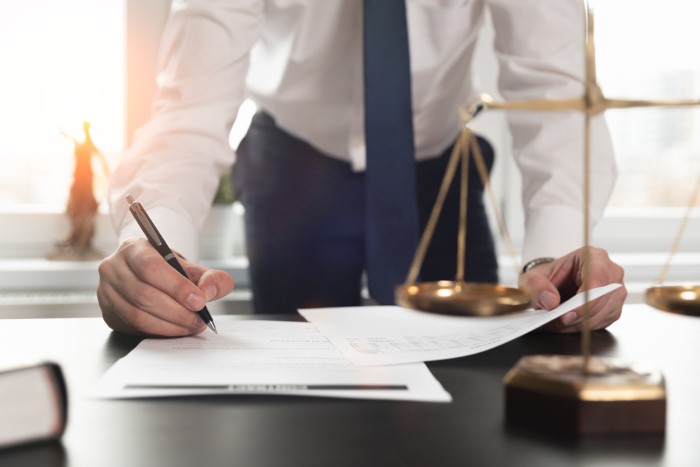The Role of Evidence in Personal Injury and Wrongful Death Litigation

Evidence is the lifeblood of the legal system, especially in the context of personal injury and wrongful death litigation. It serves as the foundation upon which cases are built, the bedrock of truth upon which justice is sought. This article delves into the multifaceted world of evidence, exploring its pivotal role in legal cases, the burden of proof, the various types of evidence used in personal injury cases, and the significance of preserving evidence’s integrity.
Why Evidence Matters in Legal Cases
Evidence is the cornerstone of any legal proceeding, and its importance cannot be overstated. It is the vehicle through which facts are presented, and ultimately, it is the key factor in influencing a judge or jury’s decision. In the realm of personal injury and wrongful death litigation, evidence is the linchpin that can determine whether justice is served or denied.
The Power of Proof
In any legal case, the burden of proof rests on the party bringing the claim, typically the plaintiff. This means that it is the responsibility of the person alleging wrongdoing to provide sufficient evidence to convince the court that their claims are valid. Without compelling evidence, even the most persuasive argument may fall flat.
For instance, in a personal injury case, the burden of proof requires the injured party to demonstrate that the defendant’s actions or negligence directly caused the harm they suffered. This involves presenting evidence that establishes a causal link between the defendant’s conduct and the injuries sustained.
The Burden of Proof in Personal Injury Cases
In personal injury litigation, the burden of proof is often described as a “preponderance of the evidence.” This means that the plaintiff must prove that it is more likely than not (i.e., more than a 50% probability) that the defendant’s actions caused their injuries. It is a lower standard of proof compared to the “beyond a reasonable doubt” standard in criminal cases.
Think of it this way: Imagine you have a scale, and one side represents the evidence supporting the plaintiff’s claims, while the other side represents the evidence against those claims. To win, the plaintiff must tip the scale slightly in their favor.
Types of Evidence in Personal Injury Cases
Medical Records: The Foundation of Personal Injury Claims
In personal injury cases, medical records are often the linchpin of the entire claim. These records provide a comprehensive account of the victim’s injuries, treatment, and prognosis. They serve as tangible evidence of the harm suffered and are crucial in establishing causation and damages.
Medical records can include:
- Doctor’s notes and observations
- Diagnostic test results (e.g., X-rays, MRIs)
- Treatment plans and progress reports
- Bills and invoices related to medical expenses
- Expert medical opinions
The Role of Medical Records
Medical records provide an objective record of the plaintiff’s injuries and medical treatment. They can establish that the injuries were caused by the incident in question and help quantify the damages suffered. Without proper documentation, it becomes challenging to prove the extent of the harm and the necessary compensation.
Eyewitness Testimonies: The Power of Firsthand Accounts
While medical records provide a factual and objective foundation, eyewitness testimonies inject a human element into the case. Eyewitnesses can provide firsthand accounts of the incident, lending credibility and a personal perspective to the case.
The Strength of Eyewitness Testimonies
Jurors often find eyewitness testimonies compelling because they offer real-life perspectives on the events in question. A well-presented eyewitness can make the incident come alive in the courtroom. However, it’s crucial to understand that eyewitness testimonies can also be subject to bias, memory lapses, and misinterpretations.
To maximize the impact of eyewitness testimonies, legal professionals must carefully select witnesses, prepare them for trial, and use their accounts to complement other forms of evidence.
Gathering and Preserving Evidence
The Role of Investigators in Collecting Crucial Information
In many personal injury and wrongful death cases, investigators play a crucial role in uncovering essential information. These professionals are skilled in gathering evidence, locating witnesses, and preserving crucial details that might otherwise be lost or compromised.
The Investigative Process
- Identifying and interviewing witnesses
- Collecting physical evidence (e.g., photographs, surveillance footage)
- Examining accident scenes and vehicles
- Analyzing medical records and other documents
Professional investigators are adept at piecing together the puzzle of events leading to the incident, providing valuable insights that strengthen the case.
Chain of Custody: Ensuring the Integrity of Evidence
Maintaining the chain of custody is a meticulous process that ensures the integrity of evidence from the moment it is collected until it is presented in court. Any break in this chain can cast doubt on the authenticity of evidence and jeopardize the case.
The Chain of Custody Process
- Documenting the collection and handling of evidence
- Securing evidence in tamper-proof containers
- Maintaining detailed records of every person who handles the evidence
- Providing a clear and unbroken trail of evidence custody
Preserving the chain of custody is vital, as it attests to the reliability and admissibility of evidence in court.
Expert Witnesses: Shaping the Narrative
The Importance of Expert Testimonies
In many personal injury cases, expert witnesses play a pivotal role in shaping the narrative. These individuals possess specialized knowledge or qualifications relevant to the case and provide expert opinions and insights that can clarify complex issues for the court.
The Expert Witness Advantage
Expert witnesses can provide invaluable assistance in cases involving technical, medical, or scientific matters. They can explain complex concepts to the jury, offer insights that support the plaintiff’s claims, and counter arguments made by opposing parties.
However, it’s essential to choose expert witnesses carefully, ensuring they possess the necessary qualifications, experience, and credibility.
Qualifications and Credibility of Expert Witnesses
The qualifications and credibility of expert witnesses are paramount. Courts assess their expertise, experience, and impartiality to determine the admissibility of their testimony.
Evaluating Expert Witnesses
- Expertise: Does the witness have specialized knowledge in the relevant field?
- Experience: Have they worked on similar cases or conducted extensive research?
- Impartiality: Can they provide an objective opinion free from bias?
Ensuring that expert witnesses meet these criteria is crucial for maintaining the credibility of their testimony and, by extension, the strength of the case.
Challenges in Presenting and Challenging Evidence
Hearsay: What Is Admissible and What Is Not
Hearsay refers to statements made by individuals who are not testifying in court. It can be a complex issue to navigate, as certain hearsay evidence is admissible under specific circumstances, while other forms are not.
Navigating Hearsay Rules
- Understanding exceptions to hearsay rules (e.g., excited utterances, business records)
- Presenting hearsay evidence that meets admissibility criteria
- Challenging hearsay evidence when it is inadmissible
Navigating hearsay rules effectively requires a deep understanding of evidence law and courtroom procedure.
Handling Documentary and Physical Evidence
Documentary and physical evidence, such as photographs, documents, and objects, can be pivotal in litigation. Properly handling and presenting this evidence requires attention to detail and adherence to legal protocols.
Presenting Documentary and Physical Evidence
- Ensuring the authenticity of documents and photographs
- Adhering to evidentiary rules and procedures
- Using demonstrative evidence to make complex points understandable
Documentary and physical evidence can provide compelling visual support for the case and help jurors grasp essential facts.
The Impact of Evidence on Settlements and Trials
Negotiating Settlements Based on the Strength of Evidence
In many personal injury cases, settlements are reached before proceeding to trial. The strength of the evidence presented often plays a central role in negotiations.
Settlement Considerations
- Evaluating the strength of the plaintiff’s evidence
- Assessing potential risks and costs of going to trial
- Calculating potential damages based on the evidence
Effective negotiation relies on the ability to leverage the evidence to secure favorable terms.
Litigating with Conviction: How Evidence Influences Trials
When cases do proceed to trial, the presentation of evidence takes center stage. Effective storytelling through evidence can sway jurors and judges.
Building a Persuasive Narrative
- Sequencing evidence logically to tell a compelling story
- Using expert testimony to support key arguments
- Anticipating and countering opposing arguments with evidence
Evidence is not just a collection of facts; it is a tool for crafting a compelling narrative that resonates with decision-makers in the courtroom.
When it comes to personal injury and wrongful death cases, you can trust our experienced team of lawyers to provide expert guidance and dedicated representation. Learn more about our services at https://www.wallacemiller.com/personal-injury-and-wrongful-death-lawyers/.
In conclusion, evidence is the lifeblood of personal injury and wrongful death litigation. From the burden of proof and the various types of evidence to the importance of preserving its integrity, evidence shapes the pursuit of justice. Legal professionals and litigants alike must understand the nuances of evidence to navigate the complex landscape of the legal system successfully. The power of evidence lies not only in its presentation but also in its ability to reveal the truth and secure justice for those who seek it.











